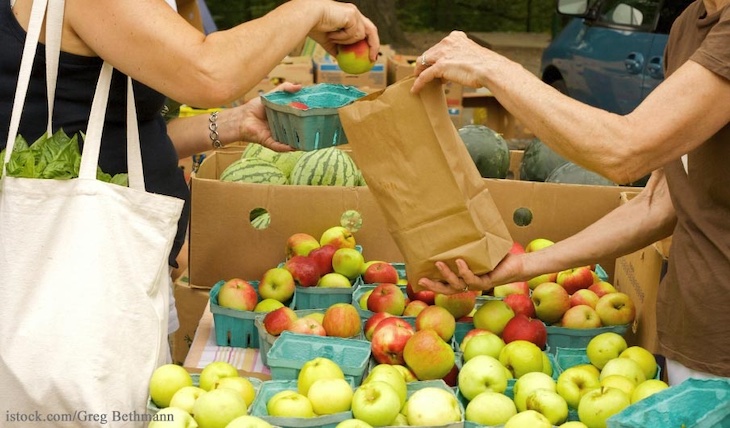A study conducted by the University of California Davis has found that there is low level contamination on farmers market produce and meat in Northern California. While the bacterial level is low, there is still “cause for some concern.” The study was published in the Journal of Food Protection.

Researchers looked at the prevalence of Salmonella bacteria on meat and produce, as well as generic E. coli on produce, which indicates possible fecal contamination. Samples were taken from 44 certified Northern California farmers markets.
They found that less than 2% of animal products sampled, including beef, poultry, and pork, teated positive for Salmonella, while all produce tested negative. But slightly more than 30% of produce did test positive for generic E coli.
Lead author Aida Pires, a UC Cooperative Extension specialist and research scientists in the UC Davis School of Veterinary Medicine said in a statement, “Based on this data, I think it’s safe to consume meat and produce from farmers markets. That’s a low risk of contamination of foodborne pathogens, especially Salmonella.”
And the concentration of generic E. coli on produce was low, even though the prevalence was high. Previous studies of contamination of food at farmers markets had much high concentration of this bacteria. And the prevalence of Salmonella in the sampled meat products was much lower than previous studies conducted in grocery stores revealed.
Still, consumers should be aware that contamination is present. Any food purchased at farmers markets should be thoroughly washed or cooked to safe final internal temperature before consumption. The study also shows that all farms can have contamination with bacteria.





“Low” concentrations compared to what? How does that compare to E. coli concentrations found on food sold at supermarkets?
The amount of contaminated food is relatively low compared to supermarket foods. And the concentration of E. coli bacteria on the farmers markets food was low too. By comparison, Consumer Reports found that almost all supermarket chicken was contaminated with pathogenic bacteria.